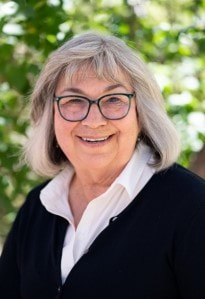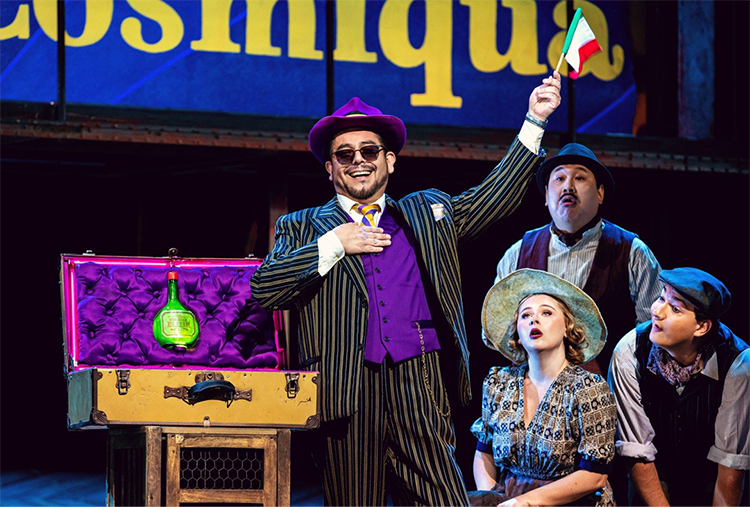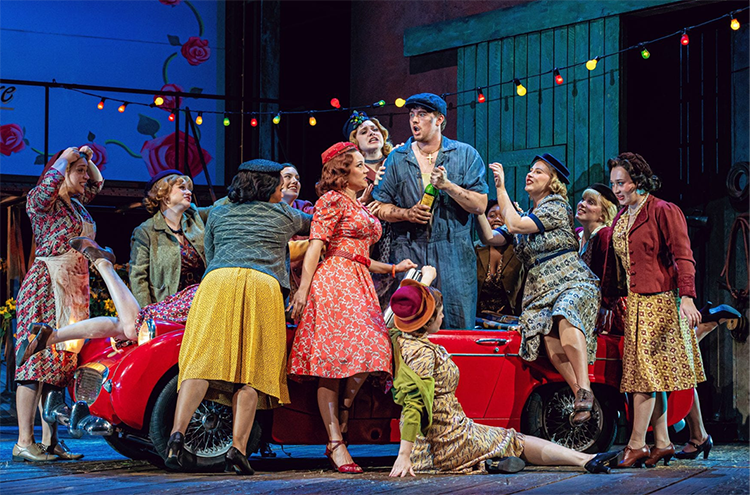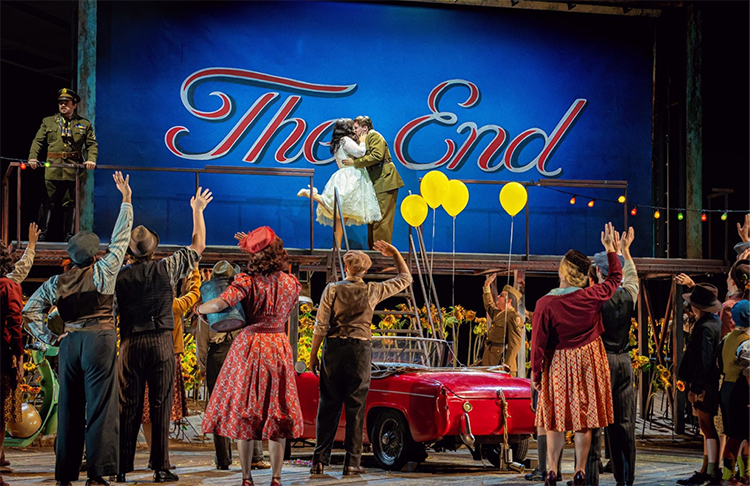|
Community ditches need tens of millions in infrastructure funding, representatives say By: Austin Fisher Source NM After unprecedented disasters, local governments in charge of centuries-old community ditches in New Mexico are asking state lawmakers for tens of millions of dollars more than usual to maintain and rebuild acequias.
The New Mexico Acequia Commission and the New Mexico Acequia Association outlined their joint legislative priorities for the upcoming session last week. There are more than 700 acequias across New Mexico, and these irrigation ditches support communities and families rooted in the practice. Some of the ditches are decades, if not hundreds of years old, and the practices are ancient – as Pueblo peoples used irrigation methods before Spanish colonization. Acequias are often loosely and locally governed, often by volunteers. But a rapidly changing climate making water more scarce and disasters like fires and flood increasingly devastating is putting the traditional practices at risk. Lawmakers in 2003 empowered acequias to approve or deny water transfers without having to go through state officials first, and in 2019 set aside $2.5 million per year to build and maintain irrigation infrastructure. However, that is not enough, acequia advocates say. According to a rough estimate, in the coming decades, acequias will need about $68 million to maintain or improve their irrigation infrastructure, said Paula Garcia, the executive director for the grassroots Acequia Association. “We don’t have complete data on all the infrastructure needs across the state but with that snapshot, I’m confident the need is in the tens of millions every year,” she said. There is no one state agency devoted to acequias, instead, there’s responsibility held across multiple state departments – including the New Mexico Office of the State Engineer or the New Department of Agriculture. Acequias will likely face challenges in getting the funding they need from the Legislature’s budget hawk, Sen. George Muñoz, who chairs the powerful Senate Finance Committee. In September, as state agencies were preparing their budget requests for next year, he called for “a disciplined approach” to spending public money. Cost sharing for infrastructure, disaster assistance The acequias are urging lawmakers to give $10 million to the Interstate Stream Commission to help pay for infrastructure repairs, which require local governments to pay a 25% cost-share, Garcia said. Acequias need the state to step in because they do not have the power to tax. Acequias’ inability to pay for debris removal has become more urgent since 2022, and resulted in “astonishing” delays in rebuilding acequias destroyed by wildfires, Garcia said. She called for debris removal after flooding to be more institutionalized and not just a reaction to emergencies. For example, Garcia’s own acequia in Mora County is in its third year without water and won’t be rebuilt until 2026. “It seems like every time we have a disaster, we’re reinventing the wheel,” Garcia said. “It’s not good for our state.”
0 Comments
FOR IMMEDIATE RELEASE–December 2, 2024–(Santa Fe, NM)– For 50 years, Agapita “Pita” Judy Lopez has been a touchstone on the property Georgia O’Keeffe called home in Abiquiú, NM. On December 31st her retirement from the Georgia O’Keeffe Museum will be official, ending a career that started in 1974. The former personal companion and secretary to the world renowned artist has served many roles dedicated to the legacy of Georgia O’Keeffe including Director of the Georgia O’Keeffe Foundation and, most recently, Projects Director for Abiquiú Historic Properties.
To recognize Pita’s enormous impact on the organization and to honor her contributions, Pita was named an Honorary Member of the Georgia O’Keeffe Museum Board of Trustees in October. She shares this honor with former First Lady Laura Bush, Co-Founder John L. Marion, and only four others. The overarching influence Pita has had on the Museum stems back three generations of the Lopez Agapita “Pita” Lopez family who have worked for O’Keeffe and encompasses the experience and knowledge of many family members, immediate and extended. Her grandfather Estiben Suazo was a gardener and groundskeeper while her mother, Candelaria Lopez, was a housekeeper and cook. Pita’s brothers Margarito, Belarmino, and the late Joseph Lopez worked for O’Keeffe when she was alive as maintenance and groundskeepers, while Belarmino also assisted with her artwork. Her father, Fernando and sister, Frances, and other relatives also worked for O’Keeffe. Margarito, Belarmino, and a third brother Steve have all worked as Maintenance Specialists at the Home & Studio for the Museum. “The Lopez Family’s remarkable impact on the Georgia O’Keeffe Museum cannot be understated and Pita is an unmistaken vital part of that rich family tradition. Pita has remained a pillar of expertise and legacy-keeping. Everyone at the Museum has learned from Pita and we are forever grateful for her generosity in sharing her insight, knowledge, and experiences with us for so many years,” Museum Director Cody Hartley said. “She will be missed dearly by myself and her colleagues and we wish her the best in retirement.” The list of Pita’s professional accomplishments is long and significant. •After caring for O’Keeffe in the winter of 1974, she began to work for the artist full-time in 1978 until her death in 1986, Pita continued working with the O’Keeffe Estate, and then in 1989 with the Georgia O’Keeffe Foundation as its Secretary. She served as the Foundation’s Executive Director from 1999 to 2006. •In the late 1990s, Pita traveled with former Director of the Georgia O’Keeffe Foundation Elizabeth Glassman to Washington, DC. There they delivered O’Keeffe’s Mountain at Bear Lake–Taos, 1930, to First Lady Hillary Rodham Clinton. It was the first painting by a 20th-century American woman artist to be exhibited in a White House state room. •In 1998, Pita was a key advocate in securing recognition for the Home & Studio as a National Historic Landmark and she is currently working to add the Ghost Ranch home to the registry. •Pita has worked for the Museum since 2006 overseeing the maintenance and preservation of both of O’Keeffe’s New Mexico homes, and the seasonal tours offered at the Abiquiú Home & Studio. •In 2012, Lopez co-authored the book Georgia O’Keeffe and Her Houses: Ghost Ranch and Abiquiu with Barbara Buhler Lynes. •With her brother, Belarmino Lopez, Pita received a Lifetime Achievement Award from the New Mexico Historic Preservation Division in 2015. •Pita founded and continues to lead the Abiquiú Garden Project, helping Northern New Mexico high school students learn leadership and teamwork skills while tending to O’Keeffe’s garden. The program produces hundreds of pounds of fresh produce donated to local food banks annually and welcomed its tenth class of interns in 2024. •Pita has been recognized for her work as a member of the Abiquiú Acequia Association and the Abiquiú Land Grant. To continue the work to which Pita has dedicated her career, including the preservation of the Home & Studio in Abiquiú and O’Keeffe’s home at Ghost Ranch, Giustina Renzoni has stepped into the role of Director of Historic Properties, expanding on her previous role of Curator of Historic Properties at the Museum Greetings fellow Abiquiuers. Merry Christmas and Happy Hanukkah. Or whatever you’re celebrating. In addition to those seasons, this is what I call “Pre-Tax Time”. It’s a time you should be looking at your investments to try to balance out gains with losses before 12/31/24.
Why? The Markets have been great this year, again, and you probably have some nice gains in your portfolio. But nothing’s perfect and you may have some losses too. If so it’s time to take some of those losses to offset the gains. Let’s define terms here. There are long term (greater than one year) gains/losses and short term (less than a year). The difference is solely in tax treatment. Long term gains are taxed at a lower rate, 0-20% maximum. Another term is “realized” vs “unrealized” gains and losses. You “realize” a gain/loss when you sell an investment. It’s “unrealized” if you haven’t sold it yet. We’re only talking about REALIZED gains/losses here. Unrealized are not taxed yet. Another factor is where the investments are. If they are in a “qualified” investment like an IRA, or 401K, or TSA, or any kind of pension or profit sharing plan, those gains and losses are not eligible for taking gains and losses in the way I am speaking of here. Gains and losses in those plans simply stay there until you take a withdrawal, then it’s taxed like “ordinary income”. So what do we do? In your “Non-Qualified” (joint or individual or trust) accounts, look at your gains and losses and, after seeking tax advice from your professional if you have one, you can take losses - that is, sell those investments - up to the gains you have “realized” so far this year. This makes the gains tax free. In fact, you can take losses up to $3,000 greater than your offset losses and use that $3,000, if you itemize, as a deduction against other income. Nice deal. I’d review this with your CPA or tax-preparer to make sure other factors are not at play. But it’s an annual exercise you should engage in if you want to minimize your taxes. Have a very Merry Christmas! Peter J Nagle Income Specialist Thoughtful Income Advisory Abiquiu, NM 87510-1321 505-423-5378 Email [email protected] Wraps, as in gifts, as in... oh, just roll with it. By Zach Hively It’s that time of year again, when we are all left wondering what to get that one special person in our lives who watches our dogs. That one special person—let’s call him Richard because that is his name—already has everything he could ever desire, including time with our dogs, our fridge stocked with beer when he arrives, and a decent percentage of our money. But what Richard does not have is a ticket to the opera. We recommend giving him one, based entirely on how much he enjoyed The Elixir of Love at the Santa Fe Opera this summer. The first glowing thing we can point out about Donizetti’s and Romani’s opera is its modest runtime: Unlike certain other operas we might mention if we knew more about operas, this one did not require us to book our dogsitters in order to attend. Handy, that, seeing as we’d invited him to come with us after his wife turned us down. But that is hardly the only glowing thing. The set itself also glowed—washed in warm light reminiscent of how I imagine things looked ca. 1946, full of sunflowers imported (we must presume) direct from Italy. A billboard filled the on-stage sky—but a warm billboard, an Italian billboard, with hand-painted lettering and imagery of pre-GMO farming practices. Not one of those blocky sans-serif atrocities pounding you with JAWS OF DEATH? CALL JEFF! and then a phone number with one numeral repeated seven times so you can remember it even after the most traumatic of traffic jams. This billboard made us want some warm bread. Which, we must note, was not served during intermission. That is the only thing we might recommend the opera do differently. Well, that and one other thing. We’ve been meaning to report this to the operatic management for weeks now: This opera was mistakenly quite funny. Opera is not ever supposed to be funny, leastwise not in the deep understanding we have from attending three whole operas this summer, for which we always stayed awake. Opera is meant for Serious Themes and Tragedy and Foreign Singing—and, sometimes, enough Death and/or Mental Anguish for JEFF! to ambulance-chase each of the principals backstage. We don’t know if this humor was a prank on the part of Director Stephen Lawless living up to his name, or a cast gone rogue on closing night. But Elixir was undoubtedly funny—funny enough to threaten men less secure than us. In fact, the opera as staged garnered two distinct and hearty laughs before anyone but the Chorus sang. One involved a rooster, and the other the letter A on a chalkboard. (We don’t wish to give away the punchlines, lest this staging—first done in 2009—gets another revival in fifteen more years.) The opera continued to defy our expectations, largely because the plot made sense. Nemorino—aka Nemo, at least in our hearts—loves Adina from afar. In that warm Italian light, she is as luscious as the billboard. But he cannot compete with Sergeant Belcore, who rolls into town with a whole army and declares he is, more or less, going to annex Adina. Nemo, naturally, despairs. Even though he has access to a sexy red car, he’s just a grease monkey. He doesn’t have a uniform with medals—just one with his first name on it—and thus he has no chance. Until! Doctor Dulcamara pulls up with his wares. He’s no snake-oil salesman; rather, he is a Bordeaux salesman, labeling cheap wine with expensive promises. Nemo buys up his love potion and promptly gets cocky enough to blow off Adina. She is so annoyed by this mechanic she brushed off earlier that she decides to marry the Sarge forever. That’ll show him, alright. What a perfect time for intermission. We had a glass of bubbly—but no warm bread—with Richard. He loosened up enough to tell us about how he took a stagecraft course in college in the 1970s and spent a summer building sets at this very opera house. This surprised us nearly as much as Elixir making sense did. The opera, we presumed, was meant for untouchables—individuals removed from the rest of us by their vocal ranges, by their stitchcraft, by their billboard-design aesthetics. Richard is a really great guy, but, like, one willing to have a beer with me. Without me even paying for it. The farthest thing from otherworldly. Is… is it possible that the people behind the opera are just regular people who happen to be good at something considered highbrow? Could they be as human as the rest of us, more or less? Perhaps it’s time we re-examine our beliefs about all things operatic. But not until this second act concludes, because this is when things get wild. Nemo comes into a million Italian bucks, but HE DOESN’T KNOW IT. He’s the only one who doesn’t know it, too—so naturally, being a man, he presumes all these women are now into him for his own potion-enhanced looks and charm. Except for Adina, somehow. He needs more potion, but since the only car in town is now repaired with working headlights and all, his only choice is to join Sarge’s army for a few lousy dollars. Mayhem ensues. There’s a brawl on the sexy red car, and a priest rides in on a Vespa wearing leather (the priest, that is, not the Vespa). There’s singing and a door that opens in the billboard and we really don’t feel right spoiling the finale of a show first staged less than two hundred years ago, but we will note that everyone ends up happy except the ol’ Sarge, and even he’s not too bent out of shape. After all, the next town over has got to have more women who look as good as Adina does, in this light.
So. Based entirely on how heartily Richard laughed throughout this inadvertently comical melodrama, we say you cannot go wrong buying your dogsitter some summer-season opera tickets for the holidays. Or any kind of gift that supports the arts! We recommend it all. It might depend on your type of dog, or your type of Richard. If you live in the Southwest, we recommend the Santa Fe Opera. If you don’t, you can still buy tickets from the Santa Fe Opera. They won’t stop you. |
Submit your ideas for local feature articles
Profiles Gardening Recipes Observations Birding Essays Hiking AuthorsYou! Archives
September 2025
Categories
All
|









 RSS Feed
RSS Feed